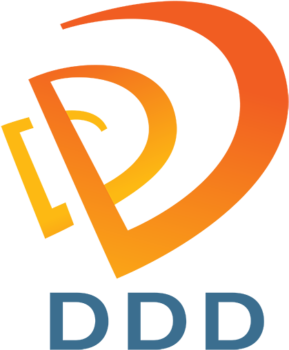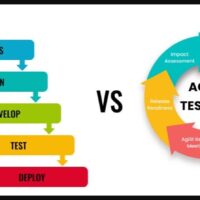
Complex projects present unique challenges that demand careful consideration when selecting a project management methodology. These projects often involve multiple stakeholders, intricate dependencies, and evolving requirements. Two prominent methodologies, Agile and Waterfall, offer distinct approaches to tackling these complexities. Understanding the nuances of each methodology is crucial for project managers seeking to optimize their project’s success.
Agile Methodology: Embracing Flexibility and Iteration
Agile methodology is a flexible, iterative approach to project management that prioritizes adaptability, collaboration, and continuous improvement. Rooted in the software development industry, Agile has gained popularity across various sectors due to its ability to handle uncertainty and change effectively.
Core Principles of Agile
- Flexibility: Agile embraces change, allowing teams to adjust priorities and deliverables as new information emerges.
- Iteration: Projects are broken down into small, manageable increments called sprints, typically lasting 1-4 weeks.
- Collaboration: Cross-functional teams work closely together, emphasizing face-to-face communication and frequent interaction with stakeholders.
- Customer-centricity: Regular feedback from end-users or clients is incorporated throughout the development process.
Key Features of Agile
- User Stories: Short, simple descriptions of features from the end-user’s perspective.
- Sprints: Time-boxed periods for completing a set of user stories or tasks.
- Daily Stand-up Meetings: Brief, daily team meetings to discuss progress and obstacles.
- Sprint Planning and Review: Regular sessions to plan upcoming work and review completed tasks.
- Backlog: A prioritized list of features, enhancements, and bug fixes to be addressed.
Benefits of Agile for Complex Projects
- Adaptability to Change: Agile’s iterative nature allows teams to pivot quickly in response to new requirements or market conditions.
- Faster Feedback Loops: Regular demonstrations and reviews enable early detection and correction of issues.
- Improved Stakeholder Engagement: Frequent communication and deliverables keep stakeholders involved and informed throughout the project.
- Enhanced Team Collaboration: Cross-functional teams work closely together, fostering innovation and problem-solving.
- Faster Time-to-Market: Incremental delivery allows for earlier product launches and quicker realization of business value.
When to Use Agile
Agile is particularly well-suited for complex projects with the following characteristics:
- Unclear or evolving requirements
- Rapidly changing technology or market conditions
- Need for frequent stakeholder feedback
- Innovation-driven projects where exploration is key
- Cross-functional team collaboration is essential
Examples of complex projects that benefit from Agile:
- Software Development: Agile’s iterative approach allows for continuous refinement of features based on user feedback.
- Marketing Campaigns: Rapidly changing market conditions require flexibility in strategy and execution.
- Product Development: Iterative prototyping and testing help refine products based on user needs.
- Research and Development: Agile supports the exploratory nature of R&D projects.
Waterfall Methodology: Structured and Sequential Approach
Waterfall methodology is a traditional, linear approach to project management that follows a sequential, phase-based structure. This methodology emphasizes upfront planning and clear documentation, making it suitable for projects with well-defined requirements and stable environments.
Key Stages of Waterfall
- Requirements Gathering: Comprehensive documentation of all project requirements.
- Design: Detailed system and software design based on the gathered requirements.
- Development: Implementation of the design specifications.
- Testing: Thorough testing of the developed system against the initial requirements.
- Deployment: Release of the final product or system to end-users.
- Maintenance: Ongoing support and updates as needed.
Benefits of Waterfall for Complex Projects
- Clear Structure: Well-defined phases provide a clear roadmap for the project.
- Predictable Timelines: Extensive upfront planning allows for more accurate timeline estimates.
- Comprehensive Documentation: Detailed requirements and design documents serve as a reference throughout the project.
- Easier Resource Allocation: Clear phase boundaries facilitate resource planning and allocation.
- Simplified Progress Tracking: Milestones and deliverables are clearly defined, making it easier to measure progress.
When to Use Waterfall
Waterfall is well-suited for complex projects with the following characteristics:
- Well-defined and stable requirements
- Clear project scope with minimal expected changes
- Sequential dependencies between project phases
- Regulatory compliance requirements necessitating extensive documentation
- Projects with fixed budgets and timelines
Examples of complex projects that benefit from Waterfall:
- Construction Projects: Building a skyscraper requires careful planning and sequential execution of phases.
- Legal Document Creation: Developing complex legal agreements often follows a structured, linear process.
- Manufacturing Process Design: Implementing new manufacturing processes may require a step-by-step approach.
- Aerospace Engineering: Developing aircraft or spacecraft components often demands rigorous, sequential processes.
Agile vs. Waterfall: A Comparison Table
| Aspect | Agile | Waterfall |
| Project Approach | Iterative and incremental | Linear and sequential |
| Planning | Adaptive planning | Comprehensive upfront planning |
| Flexibility | High flexibility to change | Limited flexibility once project starts |
| Team Structure | Cross-functional, self-organizing teams | Hierarchical, specialized teams |
| Client Involvement | Continuous throughout the project | Mainly at the beginning and end |
| Deliverables | Incremental product releases | Single final product delivery |
| Documentation | Minimal, evolving documentation | Extensive, detailed documentation |
| Risk Management | Early risk identification and mitigation | Risk assessment primarily in initial phases |
| Testing | Continuous testing throughout development | Testing phase after development |
| Project Control | Empirical process control | Defined process control |
Choosing the Right Methodology
Selecting the appropriate methodology for a complex project requires careful consideration of various factors. Project managers must evaluate the project’s unique characteristics, team dynamics, and client needs to make an informed decision.
Factors to Consider
- Project Complexity: Assess the level of uncertainty and interdependencies within the project.
- Requirements Clarity: Determine how well-defined the project requirements are at the outset.
- Stakeholder Engagement: Consider the level of involvement required from clients or end-users.
- Team Expertise: Evaluate the team’s familiarity with different methodologies and their adaptability.
- Organizational Culture: Assess the organization’s openness to change and collaborative work styles.
- Regulatory Environment: Consider any compliance requirements that may influence methodology choice.
- Time-to-Market Pressure: Determine the urgency of delivering a working product or solution.
- Budget Flexibility: Assess the project’s ability to accommodate changes in scope or resources.
Decision-Making Framework
To guide project managers in selecting the best methodology, consider the following decision-making framework:
- Analyze Project Characteristics:
- List key project attributes (e.g., clarity of requirements, expected changes, timeline constraints)
- Assign a weight to each attribute based on its importance to project success
- Score Methodologies:
- Rate how well each methodology (Agile and Waterfall) aligns with each project attribute
- Multiply the ratings by the attribute weights to get weighted scores
- Calculate Total Scores:
- Sum the weighted scores for each methodology
- The methodology with the higher total score may be more suitable for the project
- Consider Hybrid Approaches:
- If scores are close or certain aspects strongly favor different methodologies, explore hybrid options
- Validate with Stakeholders:
- Discuss the analysis and recommendation with key stakeholders
- Address any concerns or additional factors that may influence the decision
- Pilot and Refine:
- If possible, start with a pilot phase using the chosen methodology
- Gather feedback and refine the approach as needed
Hybrid Approaches: Combining the Best of Both Worlds
In some cases, a hybrid approach that combines elements of both Agile and Waterfall may be the optimal solution for complex projects. These approaches aim to leverage the strengths of each methodology while mitigating their respective weaknesses.
Examples of hybrid approaches:
- Water-Scrum-Fall: Uses Waterfall for initial planning and final deployment, with Agile (Scrum) practices during development phases.
- Agile with Gated Phases: Incorporates stage gates from Waterfall to ensure key milestones are met while maintaining Agile’s flexibility.
- Incremental Waterfall: Breaks the project into smaller, manageable chunks, each following a Waterfall approach but delivered incrementally.
When considering a hybrid approach, it’s crucial to clearly define which aspects of each methodology will be used and how they will be integrated. This requires careful planning and communication to ensure all team members and stakeholders understand the chosen approach.
The choice between Agile and Waterfall methodologies for complex projects is not always straightforward. Each approach offers distinct advantages and is suited to different project types and organizational contexts. Agile’s flexibility and iterative nature make it ideal for projects with evolving requirements and a need for rapid adaptation. Waterfall’s structured approach provides clarity and predictability for projects with well-defined scopes and sequential dependencies.
Ultimately, the success of a complex project depends not only on the chosen methodology but also on how effectively it is implemented. Project managers must consider their project’s unique characteristics, team capabilities, and organizational culture when making this critical decision. By carefully evaluating these factors and using a structured decision-making framework, project managers can select the methodology that best positions their complex projects for success.
As the project management landscape continues to evolve, remaining open to new approaches and hybrid methodologies will be key to navigating the complexities of modern projects. The goal is not to rigidly adhere to a single methodology but to adopt a flexible, tailored approach that maximizes the chances of project success in an ever-changing business environment.












